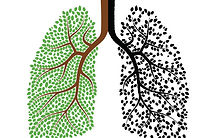COPD
Contact Us: 07957266649
Chronic
Obstructive
Pulmanory
Disorder

information for patients on COPD
fatigue
excertion results in patients stuggling for breath, because they cannot oxygenate themselfs effectively they will stuggle when excerting themselfs efficently they will not have enough energy to preform tasks such as brisk walking or climbing stairs.
Reduction in physical activity leads to fustration, increased dependance and social isolaion.
The symptoms of COPD vary depending on what contributory diesease manifests first whether this is emphysema or chronic bronchitits.
COPD patietns that have chronic bronchitits predominating are known as blue Bloaters (Bourbeau , Nault & Borycki 2002). They are typpically overweight, couloured dusky gray with lips and figner beds taking a blue hue resulting from cyanosis. they will cough frequently, although this cough will be weak and ineffective at expectorating all of the sputum in the lungs.
patietns that have emphysema predominating are known as pink puffers (Bourbeau , Nault & Borycki 2002). They can have good colour and they often appear distressed. uses accessory muscles of the neck to breath in, often sits forward bracing arms on thier knees uncomfortably stuggling for breath, will breath through pursed lips due to effort.
breathlessness
breathlessness is the most common symptom of COPD, although it is subjective (based on the indvidual experaincing it) most patients describe it as a abnoral awarness of diffuclty to breathing.
this breathlessness can be extreamily frightening & distressing for the patient.
common descriptions from patients include
''can't seem to get enough air into the lungs'
'it feels like your chokings' (Callahan 2007)
caused by the sound of turbulent air flow through the airways caused by narrowing and obstuctions (Callahan 2007), may become more evident during an exacerbation as a result of broncial constiction. wheezeing also may be more apparent in cold weather.
wheeze
cough and sputum production
A productive cough often preceades the onset of breathlessness caused by irritation of the airway nerves by sputum (Barnett 2006). COPD sufferes will have a strong cough with sputum expectorations at the onset of their disease but gradually thier cough will loose the expelling force it once had this means it is harder for the patiet to expectorate
symptoms of COPD
ankle odema
often present during exacerbations. particularly in severe COPD. ifluenced by right ide heart failure known as cor pulmoale (Barnett 2006).
cheast pain
Realtated to intercostal muscular skeletal strain brought on by straign when coughing and over excertion of respirtatory muscles (Callahan 2007), ischeamea brought on by poor lung function plays a part in cheast pain as respiratory muscles can tget an adequate amount of oxgen for them to be able to function properly.
complications of COPD
cor pulmonale ( right side heart failure) caused by increased strain and pressure on the right venticle, due to hypoxia induced vasoconstriction of the pulmanory cappillaries leading to hypertrophy & failure of the right ventricle (Rosen, Sharma & Oakley 2004).
cor pulmonale
over time chronically low levels of oxygen in the circulation (hypoxaemia) may result in an increase in the number of red blood cells (Voelkel & MacNee 2008). this is a reaction from the body to produce more heamoglobin to carry oxygen to combat hypoxia. however one of the drawbackswith this mechanism is that it increased blood viscocity which leads to an increased risk of deep venous thromboembolism and pulmonary thromboembolism (Voelkel & MacNee 2008). the viscous blood is also more difficult to pump through smaller blood vessels and this reduces oxygen delivery.
polycythemia
Ruptured air sacs can displace air into the plural cavity effecting lung function (Calverly, MacNee, Pride & Rennard (2003). Due to emphysema destroying elastin in the alveoli walls and merging alveoli to make bullae this makes the patient much more succeptible to pneumothorax.
pneumothorax
Patients with COPD and specifically sever or end stage COPD will presesnt with frequent respiratory infections, especcially in winter (Calverly, MacNee, Pride & Rennard (2003). respirtatory infections increase breathlessness even futher, infections also ramp up mucus production so a cough it normally always presesnt sputum chages colour to yellow or green. patients will generally feel more unwell, unenergetic, lethargic than they do whilst suffering COPD without an infection.